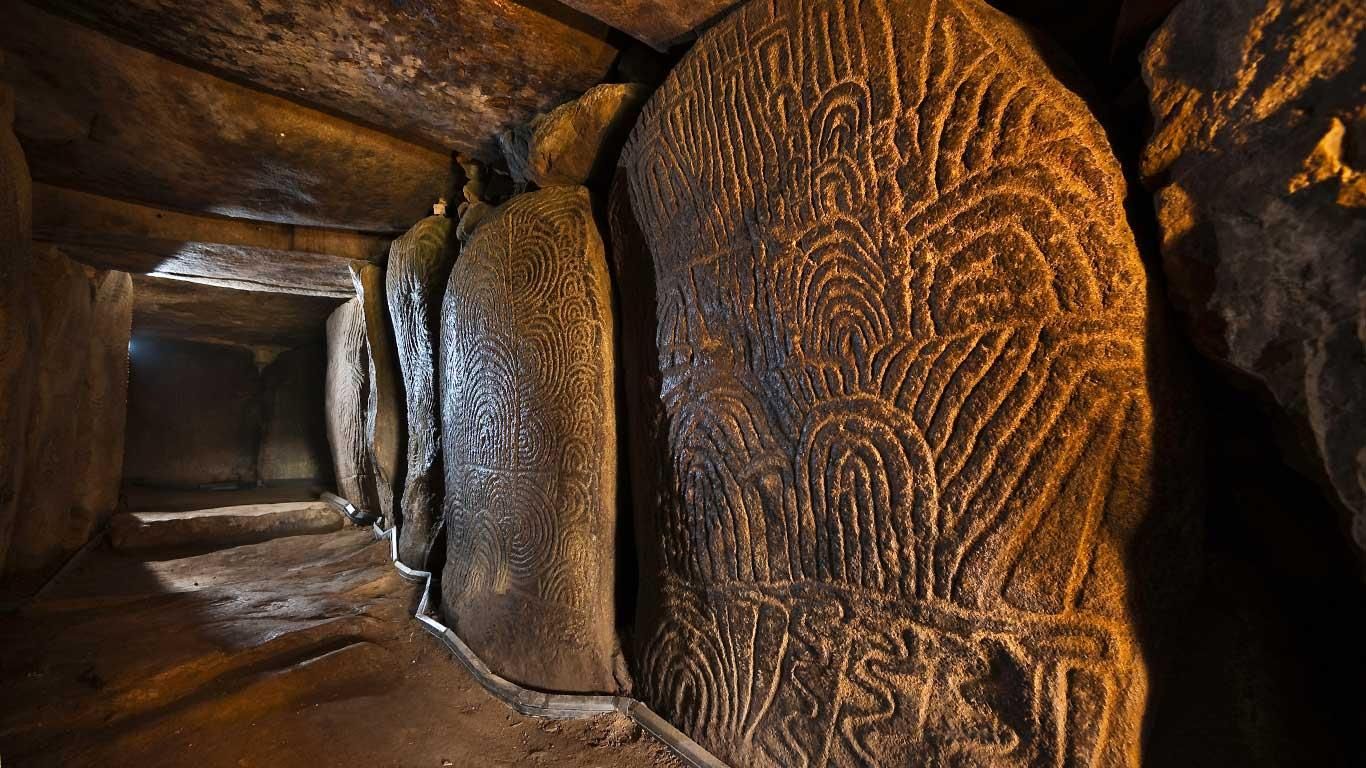Gavrinis and Core No. 7 have more in common than 4,000 BC archeological mysteries – after five years and over 1,300 posts, Core No. 7 and Gavrinis rank first and second in search terms generating Notes traffic.
Core No. 7 – In 1881 British archeologist Flinders Petrie picked up a smooth rock near the pyramids at Giza, a seemingly impossible plug of granite construction debris. Science doesn’t know how, but think they know where No. 7 came from. A plug of red granite drilled to form a door pivot – not chiseled, drilled with precision accuracy. Drills leave markings behind – a road map of rate and pressure. This is when 4000 year old granite cores get freaky – the markings on Core No. 7 are so perfectly spaced, engineers don’t believe a modern diamond tip mechanized drill could duplicate them.

Click to access 1503.0182v1.pdf
Gavrinis – Worlds away from mysteries of Egypt, a tiny rock off the coast of Brittany in France harbours the wonder of Gavrinis.In 1835 French archeologists poked about a sunken burial chamber entrance on uninhabited Gavrinis, full excavation took place in the 1930s. Waiting inside, over 50 stone slabs, more than half adorned with intricate carvings resembling fingerprints. Mathematicians believe it a code of sorts. Computer analysis dropped a bombshell – patterns represent the number of days in a year, references to solstice and equinoxes, an exact longitude and latitude of the island, and the “mathematical constant Pi”.



